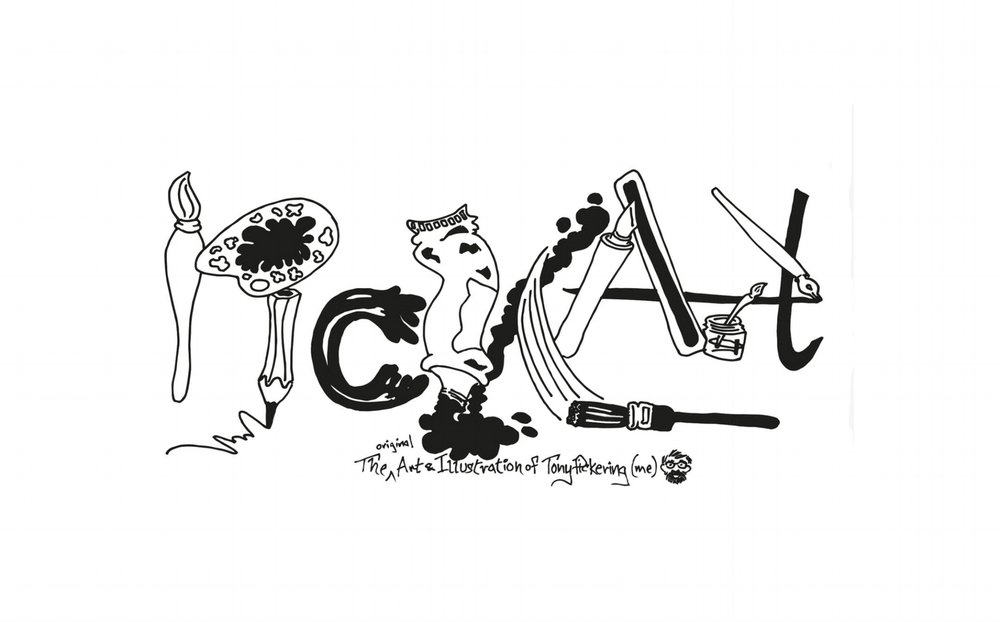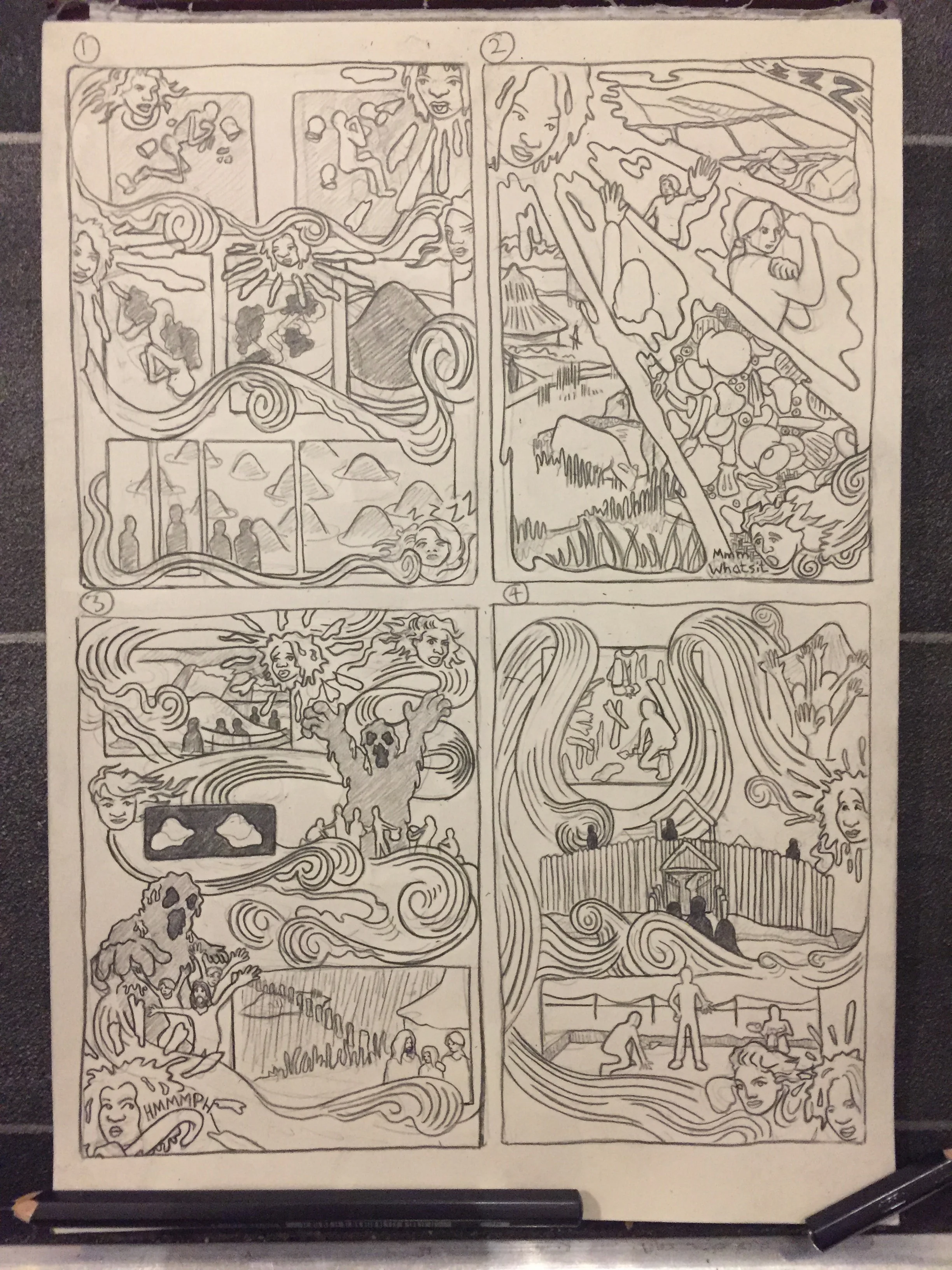fig.1: Iron Age p.3
Another week rolls around, and, for me, this week is about bringing long running projects to a close. This week I’m all about pencils – lead and colour, as I finish a series called Pre-History to Primary Schools for the Archaeology department at The University of Manchester (Specifically: Dr Nick Overton, Dr John Piprani and Dr Hannah Cobb) [fig.1]. These comics have sought to translate and imagine the department’s research, so that it can capture the imagination and contextualise the technology and anthropology of Pre-History.
The project has been collaborative, with the department gathering research, and establishing the key technological or societal factors for each era, then developing scenarios around which to display the finds, digs and things that provide the basis for our thinking about these societies; before turning it over to me to create a narrative script and to illustrate the comics. It is part of my role to balance information in narrative text, with information shown through the flow of images. Alongside the information booklet, and the comics, objects are provided to create a package that is interactive in different ways – designed to inform and represent research, but also to engage imaginations to ask more questions, and to become curious.
fig.2: Neolithic p.4
For me the challenge has been a deliberate decision to tell these stories of a society influenced by the agency of things. The narrative point of view is very much part of this society – but not necessarily human… or animal. This point of view has informed the design of panel and gutter to provide a sideways approach to the story that unfolds. Finding a visual language for this research has been ongoing – but from the start has been driven by a sense of lyricism, and a quirky perspective that is both part of society, and outside [fig.2]. Much of the collaboration has been to negotiate my instinct towards elaboration with the need to represent the accuracy of the latest thinking – to visualise the skeletons in the flesh. The result is that the strips are grounded in naturalism but seek to consider the idea of the agency of thing, flora and fauna through moments outside the specific, and a use of colour that seeks to wink at our modern empirical view of the world.
fig.3: Mesolithic p.1
As the project has developed I have evolved my process – always beginning with thumbnails, but increasingly moving to a pencil, then colour model – rather than working over the pencil drawings. With each era the images have mixed research into finds and objects, the presence of defined landscapes, hints of film allusion, with the graphic potential of comics grammar. These developments have allowed more discussion of changes, and less fear about suggesting ideas (as changes are easier), which means that the discussion becomes creative and better solutions are found. Discussions around the theme of death [fig3], the representation of gender and race, about dispelling the norms of contemporary society, and balancing the thing and the story. And, as this next week begins, it is my move in the discussion, to create my pencil templates that realise the changes suggested to the thumbnails [fig.4]… but also find a way to communicate the narrative drive ;)
fig.4: Bronze Age: initial thumbnails




